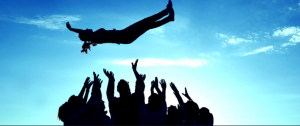Last Sunday I saw an outstanding article published in the New York Times magazine called, “What Google Learned From Its Quest to Build the Perfect Team” written by the Pulitzer Prize win ning reporter Charles Duhigg. It tells the story of data giant Google’s multi-year “Project Aristotle” which tried to discern why some teams succeeded while others failed.
ning reporter Charles Duhigg. It tells the story of data giant Google’s multi-year “Project Aristotle” which tried to discern why some teams succeeded while others failed.
Google researchers had a really difficult time finding patterns for which teams failed and which succeeded. People who performed well as individuals or people who were friends outside of work didn’t necessarily make the best teams. Conversely, the best teams did not necessarily have the best individual performers. What researchers did notice was that teams either consistently succeeded or failed. This led them to study the social norms, or culture, that prevailed in the group, which they found to be the deciding factor on the group’s performance. The best teams had two consistent qualities:
- Everyone in the group ended up with roughly the same amount of voice time at the end of the meeting.
- People in the group had a high “average social sensitivity”, meaning that they were cued in to how the others were feeling.
These two “cultural” elements create a psychologically safe place and appeals to us on a deep instinctual level and to our survival-oriented reptilian brain. When we “feel” safe, we’re more relaxed and have a sense that we can put ideas out there even if they’re not perfect. There is unconscious recognition that each team member has a role to play and that their role matters.
Google’s findings clearly demonstrate three tenets of Intuitive Intelligence: think holistically, think paradoxically and notice the unusual.
That the external qualifications and performance of individuals do not necessarily add up to the best performing teams is a great example of thinking holistically (the whole is more than the sum of the parts) and thinking paradoxically (the “best” parts do not necessarily make the best whole). Noticing the unusual is exemplified in the high “average social sensitivity” of the better performing teams because they have an inherent awareness to the subtle facial and bodily cues of their team members.
Now for the real question. How do you scale it?
Ironically through an approach that combines reason and instinct, or the rational and the nonlinear aspects of life. Google had so much data showing that teams perform better when things got real and there was more space to be human, it gave people permission to let everything be a little more messy and fun. The good news is that having a common language about “employee performance optimization” gives people a way to talk about this messiness that otherwise might feel very awkward.
